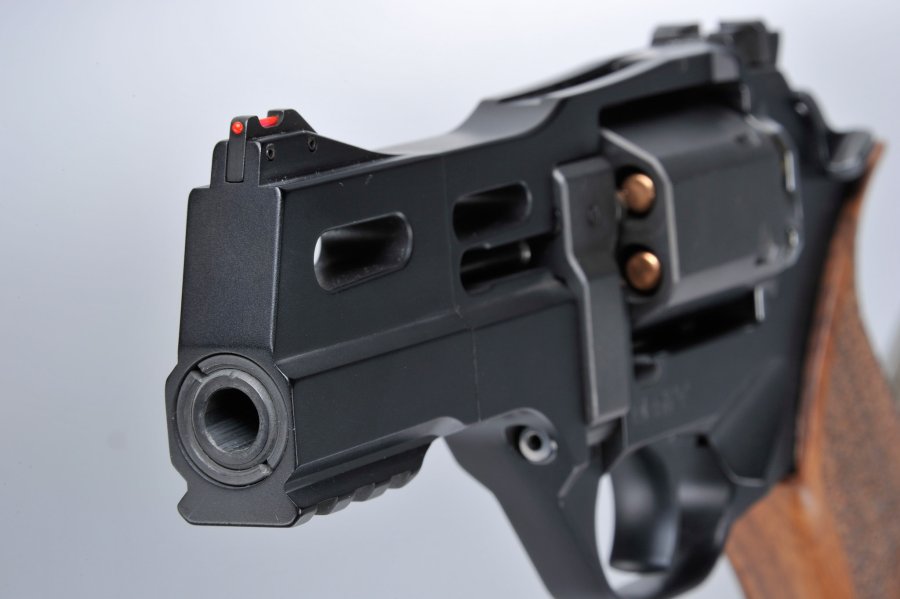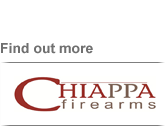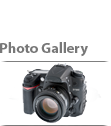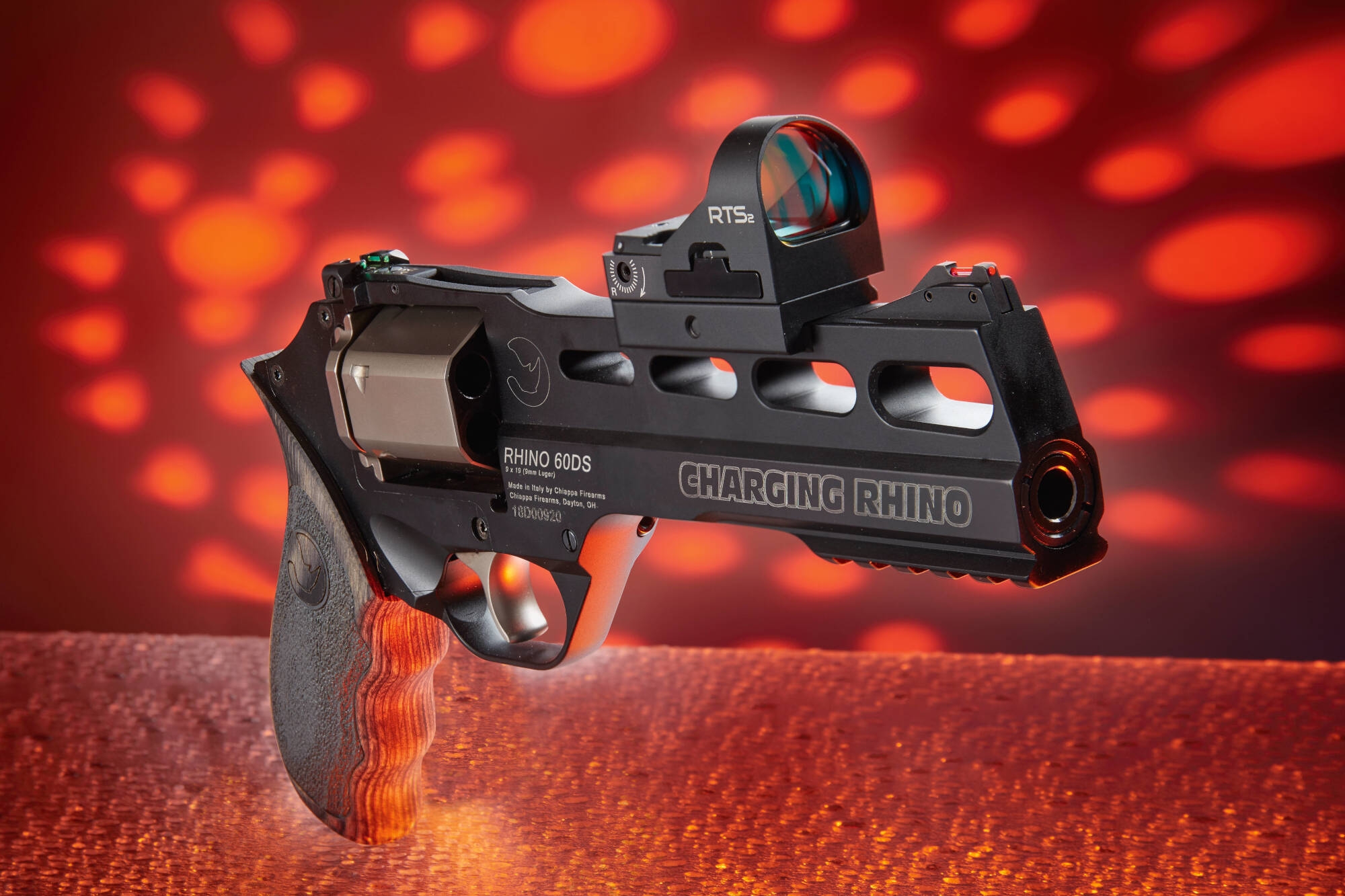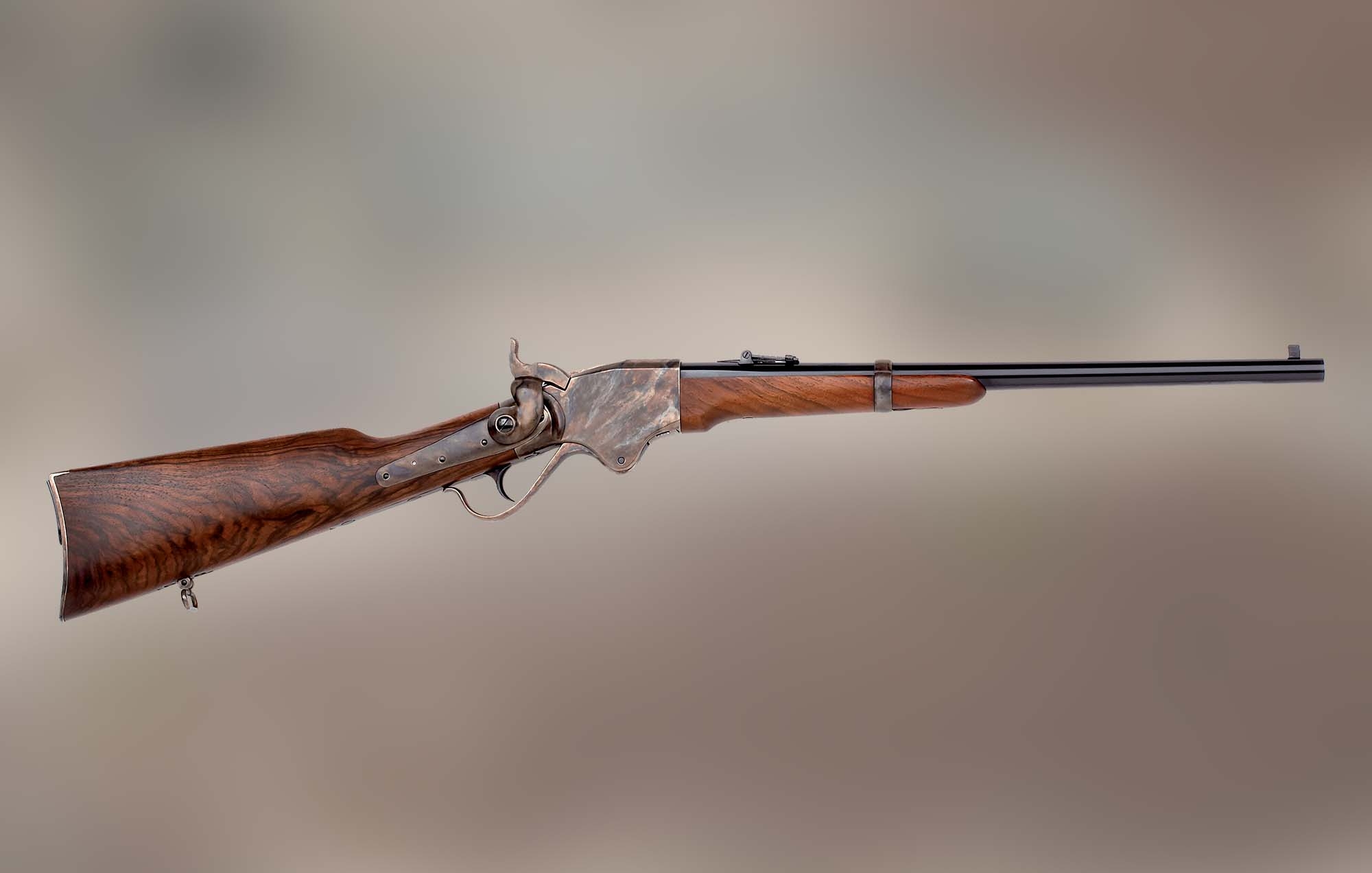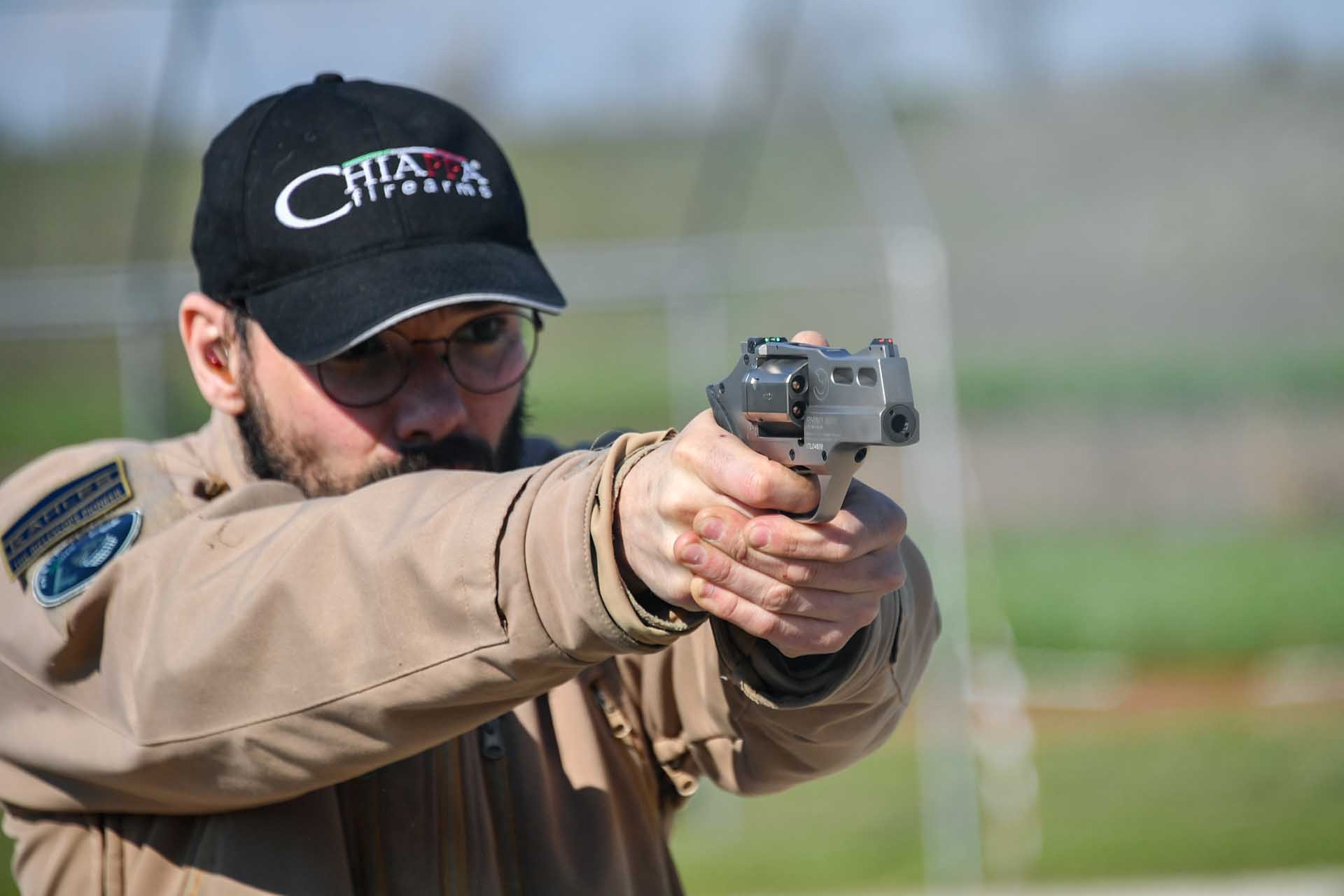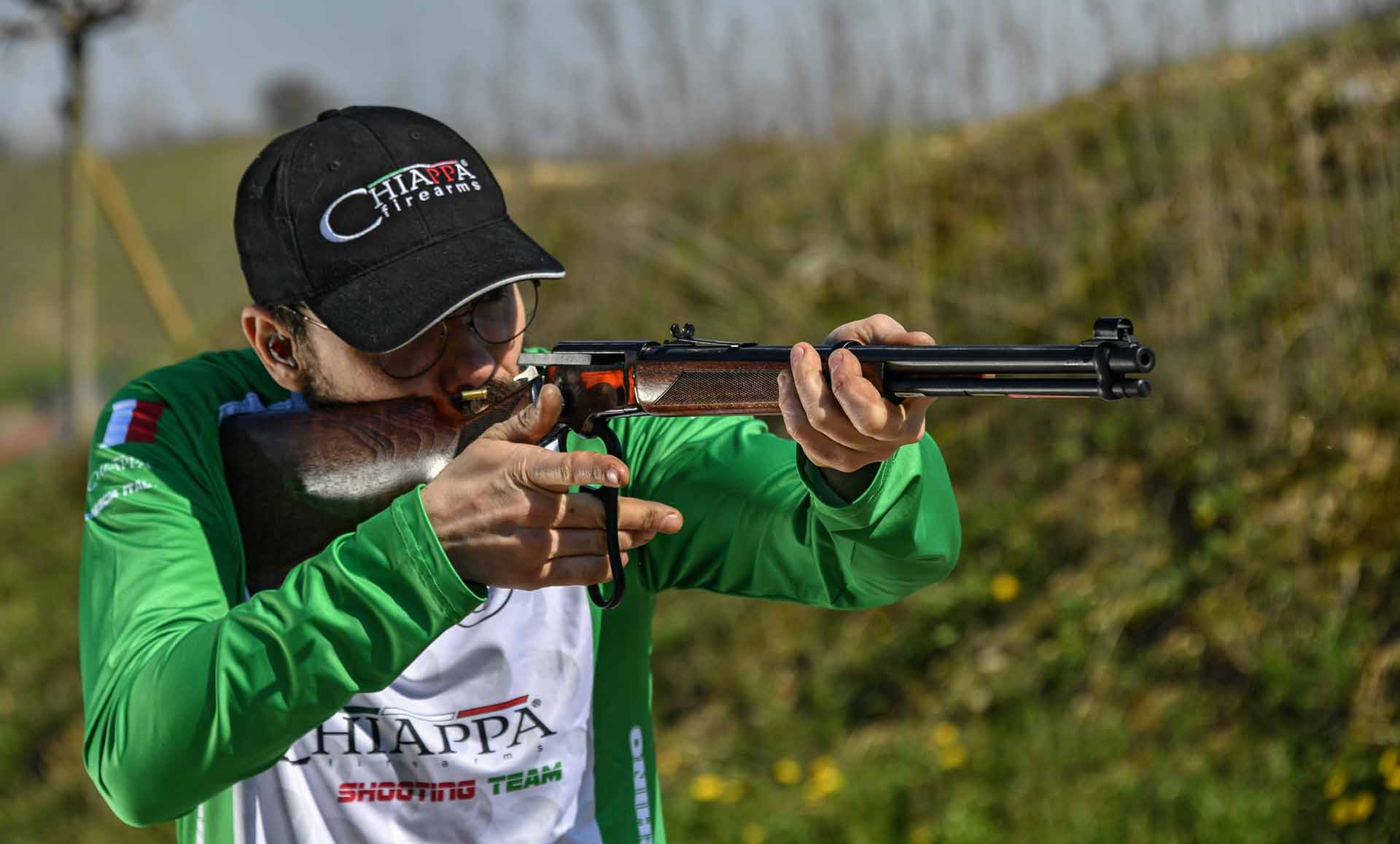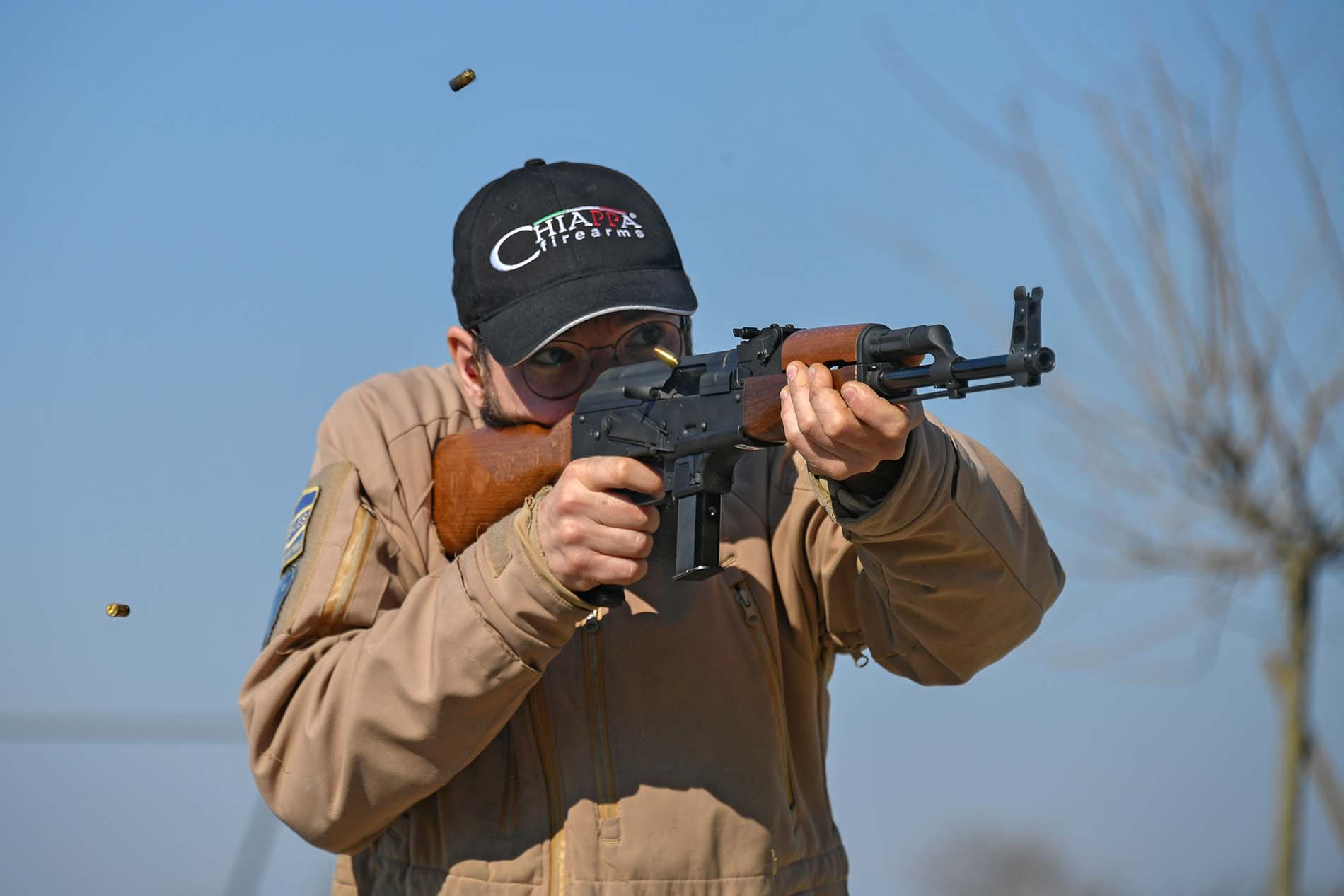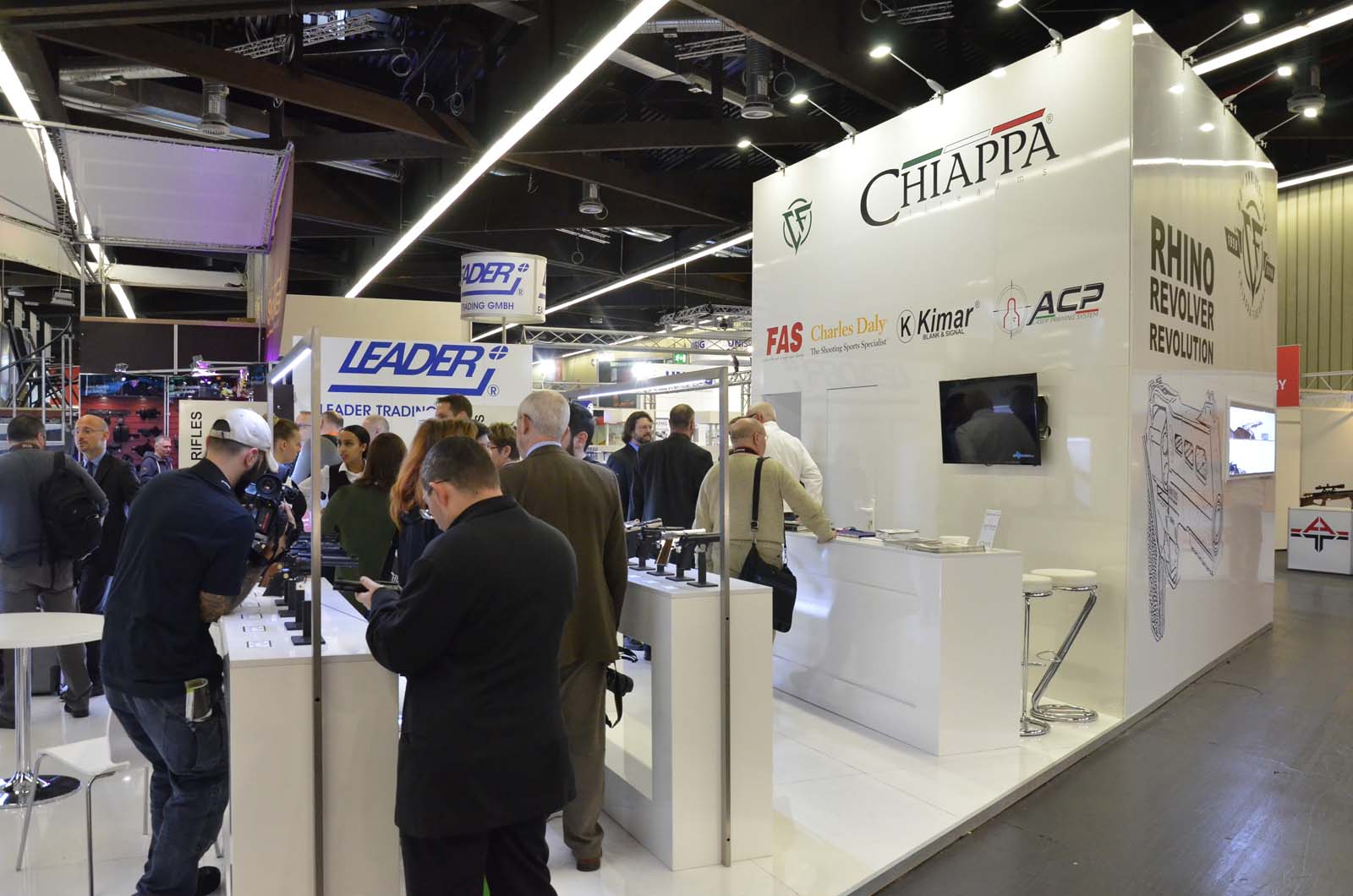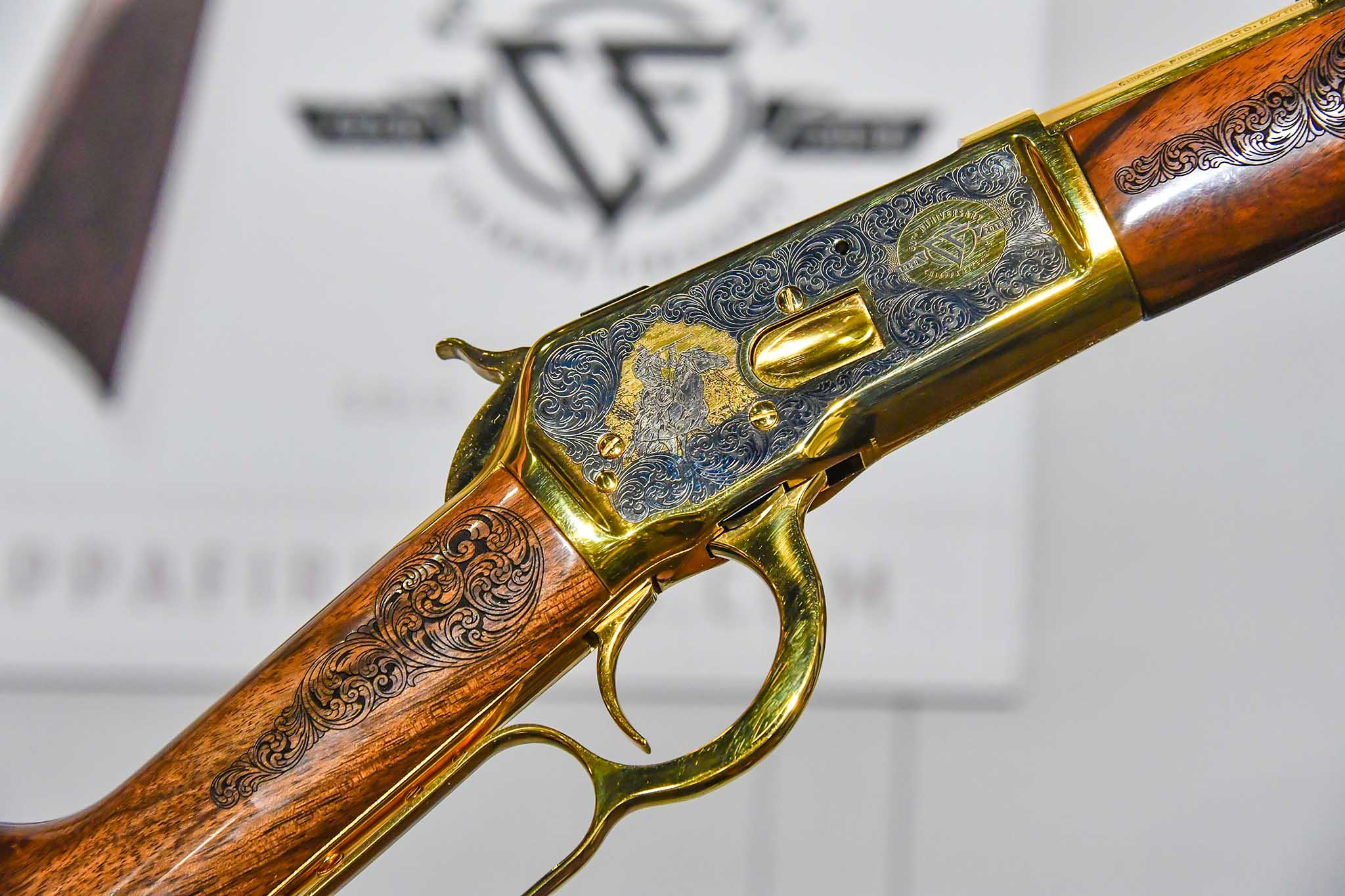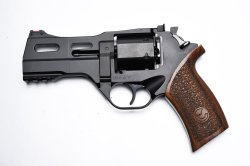
Sure, it takes a little time to get accustomed to its look.
By the end of the 1980s, we read a lot on gun magazines about the revolver engineered by Emilio Ghisoni at the Italian Ma.Te.Ba. - Macchine Termo-Balistiche company, but we never actually got a chance to lay our hands on it; particularly considering that the most direct forerunner of the Rhino − not the Ma.Te.Ba "Autorevolver" as many think, but the 2006M model − was built in only a handful of samples in the 1990s, and is today extremely sought after by gun collectors worldwide.
Almost twenty years later, the KIMAR S.r.l. group − also known as Armi Chiappa or Chiappa Firearms − picked up from where Emilio Ghisoni had left, with minor structural modifications before releasing the platform in a plethora of calibers and barrel lenghts; the company also offers a full accessories line that make the Rhino apt for the entire spectrum of possible applications for a handgun of this kind − from sports shooting to service/duty purposes, personal protection, home and property defense.
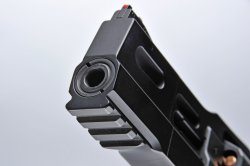
Chiappa's massive-looking Rhino revolver reminds indeed of the profile of a stylized rhino, with the front sight resembling the horn of one of the Big Five African animals of prey.
Particularly in the 2-inch barrel version − hereby portrayed is the four-inch barrel model − the similarities between the outline of the Rhino revolver and the African horned animal are conspicuous, with the top portion of the barrel rib right behind the front sight giving the impression of a rhino with his head low, ready to charge.
Coincidentally, "rhino" is also the way the given name of Chiappa Firearms' owner and CEO − Rino Chiappa − sounds in English pronunciation. It may seem a flattering contrast − the physical strenght of the rhino as an animal in comparaison with the determination of Mr. Rino Chiappa as an entrepreneur − but it's also nothing short of a coincidence: the name "Rhino" was given to this revolver by the creator, the late Emilio Ghisoni, in the early 2000s upon the introduction of the early prototypes, almost ten years before it was put in mass production and at a time when the Chiappa company was not linked to the project.
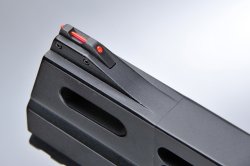
The Rhino revolver is manufactured with 2-inch, 4-inch, 5-inch and 6-inch barrels and sporting either a white or blued special protective finish. The 2-inch barrel version is also available with a double-action only trigger.
The Chiappa Firearms company also offers a wide array of accessories and variations such as front and rear sights, wooden or synthetic grips, leather or kydex dedicated holsters. Kits are also available to adjust the trigger weight from around 4.6 kilograms to 2.5 kilos in double-action; of course the lower trigger weight has been conceived for sports shooters and requires the use of light primers; we feel to strongly advise all shooters who choose the Rhino as a defensive revolver against setting their gun for such a light trigger weight; safety is not an issue unless the gun is carried with the single-action mode only, but performance in conjunction with heavier defense loads may be.
The Rhino revolvers are available in three calibers: .357 Magnum (compatible with .38 Special), .40 Smith & Wesson and 9mm; a "Combo" variant exists, featuring recesses in the cylinder chambers that allows the ready use of .357, .38 and 9mm ammunition. Last, a "PolyLite" variant − announced at the 2014 SHOT Show but not yet in production − will be native for .38 Special ammunition.
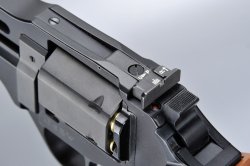
Chiappa's Rhino revolvers are sold in a foam-filled polymer carry case that also includes the instruction manual, a cleaning rod and − depending from the variant − three moon-clips and a small screwdriver to adjust the rear sight.
Even in its smaller-sized 2-inch barrel version, Chiappa's Rhino revolver looks quite massive, but the overall weight is kept to a minimum thanks to the use of machined ERGAL lightweight alloy (7075-T6 aluminium alloy, the same used in the manufacture of upper and lower receivers for AR-15 type rifles and carbines) in the construction of the frame: the Rhino will range from a 700 grams weight in the two-inch barrel version to a 936 grams weight for the six-inch barrel version − at least as far is it concerns .357 Magnum variants, with cylinder empty. Of course, the frame is the only part manufactured in aluminium alloy: all components that are under direct stress when the gun is fired − the barrel, the cylinder, and most of others − are made out of steel.
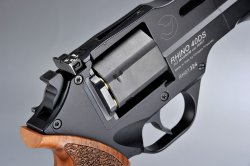
The main plate on the right side of the Rhino revolver is held in place with three Torx screws; the screw that keeps the cylinder swinging support in place is also located on the right side.
Flared seats are machined on both sides of the Rhino revolver, right behind the trigger guard, which clearly show both right-handed and left-handed shooters where to keep their thumbs, particularly when the gun is fired in double-action. The swinging support of the cylinder is to be found on the left side of the frame.
Still on the left side is the high-profile cylinder opening level, placed and shaped so to avoid accidental opening − it won't get in the way with the shooter's thumb when the gun is being fired.
The outer portion of the hammer, featuring a serrated crest, isn't what it seems to be: it actually works as a transfer lever, which controls the real hammer, all internal to the frame of the revolver. The 4-inch barrel variant hereby portrayed comes with a double-action trigger that can be manually set to single-action by pulling the crest of the external lever all the way rearward.
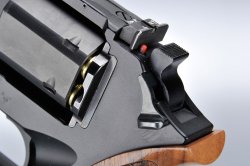
At that point, a small red cocked hammer indicator will protrude from its seat right behind the rear sight − a necessary precaution as the external hammer cocking lever will return to its original position after having been manually cocked, even if the internal hammer remains armed.
Another peculiarity of the Rhino revolver design is the hexagonal-shaped cylinder that keeps width to a minimum and allows a low-profile concealed or open carry.
The hereby-portrayed four-inch barrel variant comes with a fiber-optic front sight held in place by two nuts, and with an adjustable rear sight. The straight-profile walnut grip is extremely comfortable even for small-handed shooters, and provides quick alignment and good stability in instinctive rapid fire − the most typical in self-defense situations. The trigger is easy to reach, and its smooth configuration is optimized for double-action shooting.
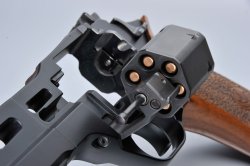
Another feature seldom − if ever − seen on revolvers is a MIL-STD-1913 "Picatinny" tactical rail right under the muzzle of all Rhino revolvers with a barrel longer than 2 inches. Six-inch barrel models also feature a Picatinny rail on the top portion of the barrel rib, to allow installation of optical devices such as red-dot or reflex sights for sports shooting.
When the right-hand revolving cylinder is closed, a pivoting pin protrudes from a seat in the swinging support of the cylinder itself and into the frame to keep it in place.
The Rhino revolver comes with with three automatic safeties: two are engaged to prevent the gun from firing out of battery − e.g. if the cylinder is not perfectly closed − while a sort of hammer block prevents the hammer to enter in contact with the firing pin if the trigger isn't pulled by the shooter himself. As the internal hammer is not connected with the external cocking lever except when it is manually operated (in that case, a transfer bar is engaged) the gun will not fire if it falls to the ground or undergoes any kind of shock. This makes Chiappa Firearms' Rhino the world's only revolver that can be carried safely in "Condition One" − that is, with a cocked hammer for a single-action first shot, just like a semi!
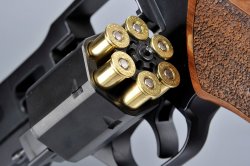
Only a few words about recoil.
When a gun is fired, the bullet is propelled forwards by the pressure of the gases; by the third principle of dynamics (Physics 101 here!) an equal and contrary impulse will be generated; hence, recoil. Even though recoil levels can be measured in math, it is felt differently by different shooters: a trained, 120 Kg. fully muscled Navy SEAL will feel less recoil than a thin, small newbie who never handled a gun in his life before and is afraid of loosing grip over it.
Other factors can get in the way, such as the shooter's state of mind − squeezing a few shots at the range allows the shooter to profuse a different effort at concentration and control of the gun itself than what he/she could possibly have when engaging an attacker in a life or death situation. When talking about long guns − rifles, shotguns, carbines − the clothing layers between the stock and the shooter's shoulder also help in reducing the felt recoil levels.
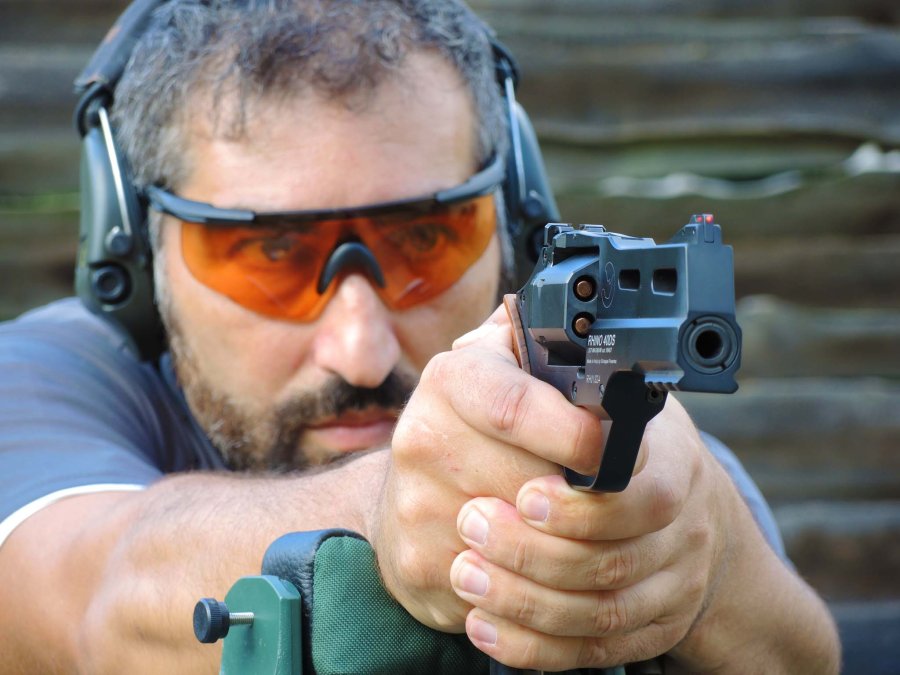
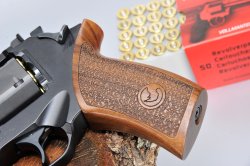
As the support point in respect to the bore axis (normally and necessarily located low and frontally) varies when the gun is fired, the impulse also creates a muzzle climb phenomenon, which can be even more fastidious to the user and counterproductive for accuracy than recoil itself, and is more pronounced with short-barrel, high-caliber firearms.
In the Rhino revolver, the low-mounted barrel has a double mitigating effect on both recoil and muzzle climb: it leads the recoil to dissipate horizondally along the axis of the arm that's holding the gun, making it less perceptible; and reduces muzzle rise, as the shooter's hand is closer to the barrel axis.
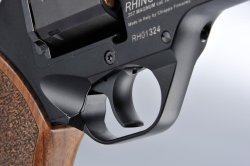
This of course allows the shooter to re-align the gun with the target faster, and shoot more rounds in less times. New shooters will also gain more confidence, as they'll have no feeling of the "gun jumping out of their hands".
We tested the Chiappa Firearms Rhino 40-DS revolver with several .357 Magnum factory loads − some of them being quite hot. The Rhino proved to be well manageable in both one-handed or two-handed shooting, even with the hottest ammunition: the peculiar technical layout sure provides the desired effect.
The reduced muzzle climb allowed us to fire the Rhino in an accurate and fast way. The excellent barrel allowed us to obtain very tight groups at 15 metres in double-action mode, with all the six holes touching each others.
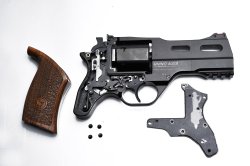
Two-handed shooting with the Rhino must be approached carefully, as if the support hand is placed too forward, the thumb may get hit from the exhausts coming out from the cylinder gap.
The thumb seats behind the trigger guard eliminate all sorts of problem when the gun is fired single-handedly, and they also provide the right support even when the gun is fired in double action, with the thumb in a lower position, as close as possible to the tip of the trigger finger.
Both the smooth profile trigger − allowing the index finger to manage double-action shots better − and the grip (whose uniform, almost straight profile allows the shooter's hand to adapt perfectly to it) proved to be perfect for fast shooting.
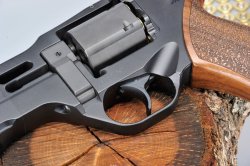
Chiappa's Rhino revolver is becoming increasingly popular between gun owners, gun enthusiasts and sports shooters alike − particularly those who compete in revolver shooting specialties, as the reduced felt recoil and muzzle climb allows faster accurate shooting.
The trigger weight adjustment capabilities and the several available barrel configurations allow the Rhino owners to adapt their revolvers to informal training, shooting competition and defense purposes alike; particularly, the 2-inch barrel variant is a perfect revolver choice for personal, home and property protection.
Chiappa Firearms' Rhino revolvers are priced anywhere between 900,00€ and 1.300,00€ in Europe, depending from the variant, finish, and caliber. Perspective non-European buyers should check with their local distributors for availability and pricing; a complete list of authorized international distributors is available at the Chiappa Firearms' website.
Given the quality and performance levels, the price tag seems to be quite proper. Sure, classic revolvers aficionados − Colt or Smith & Wesson lovers − will have a hard time getting used to its look, but they also need to face the fact that the shooting performances of the Rhino platform is currently unmatched by any standard-layout revolver... including those classic Colts or Smiths you love so much!



